Could Lacrosse Plus Help Your Junior’s Game This Year. Discover 15 Ways To Unlock Their Full PotentialCould Lacrosse Plus Help Your Junior’s Game This Year. Discover 15 Ways To Unlock Their Full Potential
Proper Equipment for Safety and Performance
Hey friends, let’s chat about the importance of having the right gear for your sport. I know, I know – equipment can be spendy and it’s tempting to cut corners. But trust me, getting the proper equipment will pay off big time when it comes to safety and performance.
Let me use lacrosse as an example. I’ve seen way too many kids showing up to games with hand-me-down gear that’s too big, too small, or just plain worn out. Not good, folks! Getting sized for equipment specifically fitted for your child is crucial. An ill-fitting helmet can slide around and obstruct vision. Pads that are too loose won’t protect from hits. A droopy crosse head makes throwing, catching and cradling much tougher.
Having equipment that’s tailored to your kiddo’s size and position makes them safer on the field. And we all want our kids protected out there, am I right? Properly fitted gear also lets players move freely and perform their best. Your athlete will have the confidence to get physical knowing their body is safeguarded.
Lacrosse Sticks
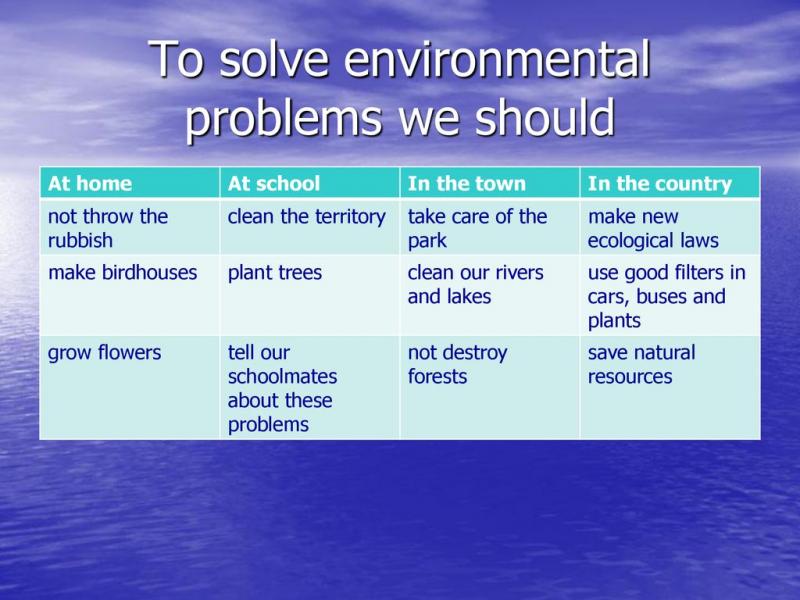
Let’s start from the ground up. A well-strung lacrosse stick is vital for ball handling. The head should be strung tight and flat for accurate passing and shooting. Experienced players may want more slack for cradling and fancy moves. Mesh should be anchored well so it doesn’t shift during play. Pocketing the ball too deep makes throwing and catching very difficult. A shallow pocket helps maintain control.
For younger kids, go with a stick that’s lightweight and sized for their height. The handle length determines how far they can reach when scooping up ground balls. They’ll need a little extra length to account for future growth spurts! Hard plastic heads retain their shape game after game. Composite sticks are more durable for field contact.
Helmets
There’s nothing more important than protecting your noggin on the lacrosse field. Helmets should have a snug fit all around with no gaps where the skull is exposed. Straps should be centered under the ears and fastened snugly under the chin. The brim should sit about one finger width above the eyebrows so it doesn’t obstruct vision.
Helmet materials and padding make a big difference in safety. Harder outer shells and denser foams absorb impact better. Youth players just starting out can get by with basic protection and ventilation. More advanced athletes need high-tech gear designed for hardcore contact. Goalies especially require reinforced helmets that extend to cover the neck.
Pads

Pads guard vulnerable body parts during checks and falls. They allow players to check and play physically without getting banged up. Arm pads cushion blows from stick clashes and body checks. Options range from basic sleeve pads to full-arm guards with plastic caps.
Shoulder pads soak up high-impact hits to the chest, back, and collarbone area. Ribs pads add another layer of protection for midsection strikes. Gloves safeguard hands and wrists from slashes during poke checks. Goalies need extra padding on hands, arms, and chests as they directly face shots.
Make sure pads fit snugly without restricting movement. Bulkier pads can cause overheating on warm days so look for lightweight, breathable materials. Hard shell covers on elbows, shoulders, and shins defend against bruising. For starters, focus coverage on the most vital areas like wrists, rib cage, and clavicles.
Equipment Bags
Every player needs a solid equipment bag to transport their gear. Duffle bags work for younger kids with less bulky items. Backpacks distribute weight more evenly and are easier for kids to carry independently.
Look for bags with plenty of ventilation to prevent bad odors. Outside pockets help organize smaller items like mouthguards and cleats. Water-resistant fabrics keep gear dry if left out in the rain. Zippered opening provide security while wet items air out after games.
For older players with full sets of pads and sticks, wheeled bags are a must. They take the strain off backs and shoulders when lugging a heavy load. Some even come with retractable handles like suitcases. Sturdy in-line skate wheels handle grass and pavement smoothly.
Cleats
Good traction is a must for quick cuts, dodges, and directional changes on the lacrosse field. Cleats have studs that grip the turf to prevent slipping. Most are set up with four studs in the heel and 8-10 along the ball of the foot.
Consider field conditions when selecting cleats. Longer studs provide stability in soft, muddy grass. Shorter studs are ideal for hard, artificial turf. Rubber or plastic studs last longer than metal options. Detachable studs can be switched out as field conditions change.
Make sure cleats fit snugly around the heel and midfoot. They should be comfortable even before breaking them in. Help prevent blisters by wearing moisture-wicking socks that fit smoothly inside shoes.
Mouthguards
Don’t let your kiddo step foot on the field without a mouthguard! Lacrosse is a high-contact sport where sticks are constantly flying around faces. A proper mouthguard protects teeth, jaws, lips and gums from trauma.
Custom-fitted guards made by a dentist offer the best protection. But less expensive boil-and-bite options from sporting good stores work too. Make sure your young athlete keeps their mouth shut when molding the guard to get a snug fit to upper teeth. Look for a retaining strap to prevent the guard from slipping out during play.
Go Premium for Performance

Lacrosse gear has come a long way from the handmade wooden sticks of centuries past! These days you can get high-tech carbon shafts, space age helmets materials and scientifically engineered cleats. While premium equipment comes at a price, it can give serious players a performance edge.
New tech in stick design optimizes the flex, feel, handling and power. Advanced padding and ventilation systems keep players cooler and more mobile. Anatomically designed cleats provide the ultimate in speed and agility. Smart helmets even have sensors to detect dangerous impacts and alert coaches.
High-end gear isn’t crucial for beginners, but can help experienced athletes reach new levels. Talk to coaches during the offseason about equipment to up skills and dominance on the field. With the right gear, the possibilities are endless for your lacrosse all-star!
Fundamentals of Passing and Catching
Listen up lax lovers, I wanna rap about some key skills that make or break lacrosse players – passing and catching. These basic techniques take time to master, but lay the foundation for future success. Let’s break it down so your athlete can up their passing and catching game this season!
Passing and catching requires coordination between hands, eyes, feet and crosse. Players must scoop, cradle, wind up and release with power and precision. On the receiving end, focusing on the ball into the pocket absorbs its force. Repetition develops the muscle memory needed for slick execution.
Coaches stress keeping your hands soft and relaxed. Gripping the stick too tight causes fumbling. Cradling loose and letting the ball sit deep in the pocket gives optimal control. Quick sticks passes rely on fast hands that catch low and release immediately back up top.
Passing Fundamentals

A crisp lacrosse pass starts from the ground up. Proper footwork establishes body position and balance to wind up. Plant the front foot in the direction of the pass, pointing shoulder toward the target.
Rotate hips and shoulders back, dropping the head of the stick towards the rear foot. Cradle high to keep the ball in place as you wind up. Shift weight forward and turn hips and shoulders toward the target to launch the ball out front.
Follow through fully after the release, whipping the stick around to aim at the receiver. Legs drive power from the ground through hips, core and shoulders. Let the stick do the work rather than forcing with the arms.
Catching Fundamentals
Focus is key for plucking passes out of the air. Keep eyes glued to the ball from release to reception. Watch it all the way into the pocket, never taking your eye off even for a split second.
Position your body in line with the ball’s path, knees bent and stick out front. Point the pocket perpendicular to the ground to provide the largest catching surface. As the ball contacts mesh, roll the stick up and away to absorb force.
“Give” with the ball to control the impact, like catching an egg. Keep the stick moving after catches to maintain ball control. Scoop through on low passes; snap your wrists up high to snag sky-high feeds.
Lead Passes
Strategic passing involves more than just tossing to a stationary target. Leading teammates creates scoring opportunities through calculated ball movement.
Throw ahead of cutting teammates so they can run on to passes in stride. Estimating speed and trajectories takes practice. Underleading can force them to slow down or double back.
Overleading risks sailing the pass out of reach. Communicate to get timing down and find each player’s sweet spot. Lead the receiver so their momentum carries them toward the goal.
Quick Stick
Quick stick passing relies on rapid-fire teamwork around the crease. Middies feed the ball in close to attackmen who instantly one-touch it into the net. Defenders have little time to react before the shot.
Master quick stick timing through repetition. Feeders place low passes within the shooter’s peripheral vision. Receivers hug the crease with knees bent, ready to catch and release in one swift motion.
Letting the ball barely kiss the mesh before passing eliminates windup. Follow through fully toward the cage for accuracy. Goalies struggle to track and save blistering quick-stick attempts.
Behind-the-Back

Behind-the-back (BTB) passing is a showboating technique that leaves defenders in the dust. Executed well, it’s extremely effective for setting up scoring chances.
Cradle the ball high across your back shoulder. Reach the stick around your backside, cupping the ball in your off hand. Step toward the target and whip your stick around for momentum.
Lead your target so they can run onto the BTB feed. Use BTB passes to dodge checkers or fake out goalies by hiding your release point. Just don’t hot dog it in traffic where turnovers prove costly.
Drills to Perfect Passing
They say repetition is the key to mastery. Here are some of the best drills for developing flawless passing technique:
– Wall ball – Stand 5-10 yards from a wall and throw-and-catch, concentrating on mechanics. Vary speed, angles and distances.
– 2-man passing – Face each other 10 yards apart, passing back and forth. Move around to hit different angles and leads.
– 3-man weave – Pass down the line to work on timing and teamwork. Execute give-and-go’s around imaginary defenders.
– Rapid fire – Players line up 5 yards apart and blister quick-stick passes back and forth to build hand speed.
– Box drill – Feeders at each corner whip fast passes to a catcher in the middle who redirects them back out.
Drills for Catching Excellence
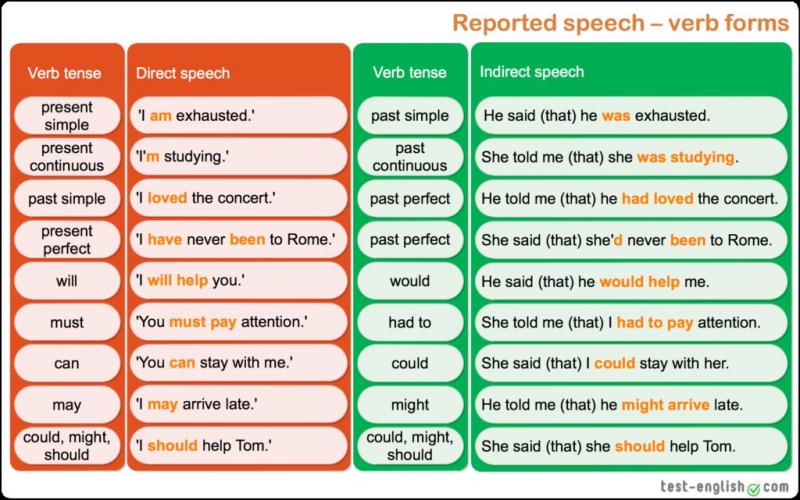
Developing soft hands and lightning reflexes takes continuous drilling such as:
– Ocular tracking – Focus on objects in peripheral vision to improve concentration without looking directly.
– Close-range reaction – Partner stands 2 yards away and tosses balls to catch without flinching.
– Juggling – Keep balls in the air to work on coordination and hand-eye communication.
– Blind catching – Receive passes with eyes closed to sharpen feel for ball in pocket.
– Drop drills – Toss ball up and catch cleanly in various body positions: kneeling, sitting, jumping.
Regardless of position, lacrosse greatness hinges on passing and catching skills. Keep putting in the work and positive results will surely follow. Remember the basics, challenge your hands and reactions, and stay focused – you’ve got this!
Mastering Cradling and Ball Control
Hey laxers, let’s talk about vital stick skills – cradling and ball control. These techniques separate the all-stars from the also-rans. A snug pocket and smooth cradling makes possessing, passing and protecting the rock a breeze. Read on to take your cradling and command to the next level!
Cradling involves rhythmic motion of the stick head to maintain ball control. Players “rock the baby” from side to side while running. Rolls, spins and pivots shield the ball when defenders approach. Mastering nuances takes tons of stick time and hand strength.
Proper stringing creates a uniform, centered pocket. Shallow is ideal for handling; deeper pockets increase holding power. Mesh should be taut enough to snap back after cradling. The ball sits just below the sidewalls, protected but readily accessible.
Cradling Fundamentals
Newbies think cradling means flailing the stick wildly. Real lacrosse cradling is controlled and compact. Start by holding the stick firmly with lead hand at the butt end. Guide the shaft with your guide hand in a light grip up top.
Keep elbows tight to the body, never waving the stick beyond shoulder width. Cradle the ball smoothly side to side using wrist rolls. Let the stick do the work, not your arms and shoulders.
Increase speed and range of motion as skills improve. Always maintain control and poise. Cradling well takes relentless practice to lock in proper mechanics.
Change Directions
Blazing downfield in a straight line is great but changing pace and direction while cradling requires true mastery. Execute hesitations, stutters, jukes and spins to keep defenders guessing.
Plant the lead foot and pivot hard off it to turn corners sharply. Cup the ball firmly during pivots to keep possession. Time hand switches for a seamless transition as you spin to the opposite side.
Vary cradling speed, go slow-to-fast or fast-to-slow to lull checkers to sleep. Then hit the jets! Practice cradling and maneuvering cones until you can do it all full speed without spilling the ball.
Split Dodges
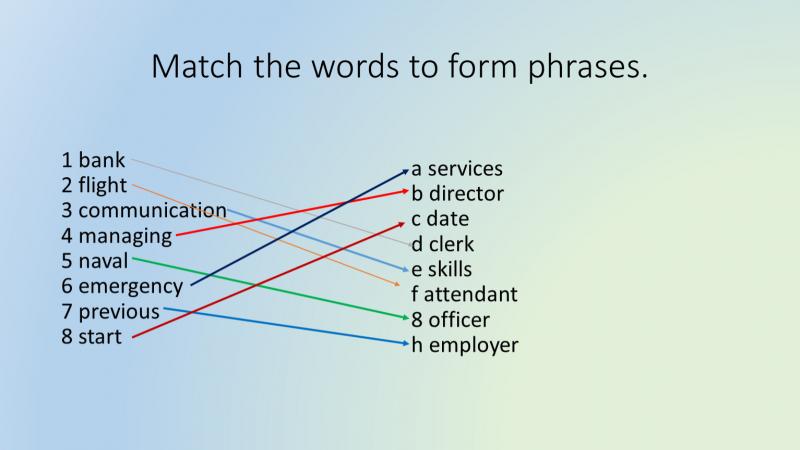
Dodging defenders starts with a textbook split dodge. First, step laterally away from your marker, peeling their defense open. Next, plant and explode in the opposite direction, blowing right past them.
Time the initial move so they lean the wrong way. Drop the shoulder and head fake to sell the bait. Cradle and shield the ball as you plant off the lead foot and jet the other way.
Get low coming out of cuts to maintain stability and power. Keep pumping your legs to motor away from out-juked defenders. Split dodging takes perfect timing and body control.
Roll Dodges
Roll dodges add theatrics by turning away from defenders before reversing back upfield. Perform a roll dodge by spinning 180 degrees while cradling, putting your body between the ball and checker.
As they reach to poke check from behind, spin back around and blow by them. Time the reverse precisely when you feel stick pressure on your back. The more dramatic the roll, the better!
Guard your stick during rolls to deny the checker. Come out sprinting to leave them stumbling. That’s how you put them on skates and waltz in for scores!
Face Dodges

Face dodging aims to juke defenders head-on. Bring the stick across your body, then rock it back the opposite way violently to make them bite.
Sell the fake hard by snapping your head and shoulders with the stick. When they lunge, swiftly split or roll dodge around them. The classic face dodge freezes defenders, letting you choose how to skirt them.
Time face dodges well by reading defenders’ movements and reactions. Go full speed to make every fake and cut as convincing as possible. Defenders will be twisted in knots!
Poke Protection
Great dodges mean nothing without protecting the rock from prying stick checks. Use body position and cradling skills to shield against poke checks:
– Keep hips low and knees bent to make yourself a smaller target.
– Cradle high to lift the ball out of reach from below.
– Cup the ball gently to feel poking pressure and react.
– Switch hands behind your head when defenders swipe from behind.
– Spin away or reverse direction when you sense overplaying on one side.
The best protection is having awesome feel and control when cradling. Drill poke check evasion relentlessly to get your moves instinctual.
Ground Balls
Ground balls are up for grabs after passes are dropped or checked loose. Scoop them skillfully by:
– Running straight at the ball, don’t reach until almost on top of it.
– Pointing lead shoulder down with knees bent to drive through the scoop.
– Keeping the stick parallel to the ground, don’t “stabbing” down at sharp angles.
– Following through to lift the ball smoothly into your pocket as you scoop.
– Cradling immediately after scooping to protect possession.
Drill GBs constantly – the hungrier team nearly always prevails! Master ground ball proficiency along with cradling and dodges to dominate games.
Shooting Techniques and Accuracy
Laxers, let’s talk scoring! Burying goals is the delicious end result of sound shooting technique and accuracy. Whether windup cranks from way out or quick sticks in tight, a wide arsenal of shots is crucial.
Shooting mechanics start from the ground up. Proper footwork establishes body position, balance and power transfer. Work on stick handling, release points and follow-through for optimal ball speed and placement.
Sharpshooters practice relentlessly to perfect shooting forms and hit targets on demand. Read on to take your shotmaking to the next level and light up the back of nets!
Overhand Shot
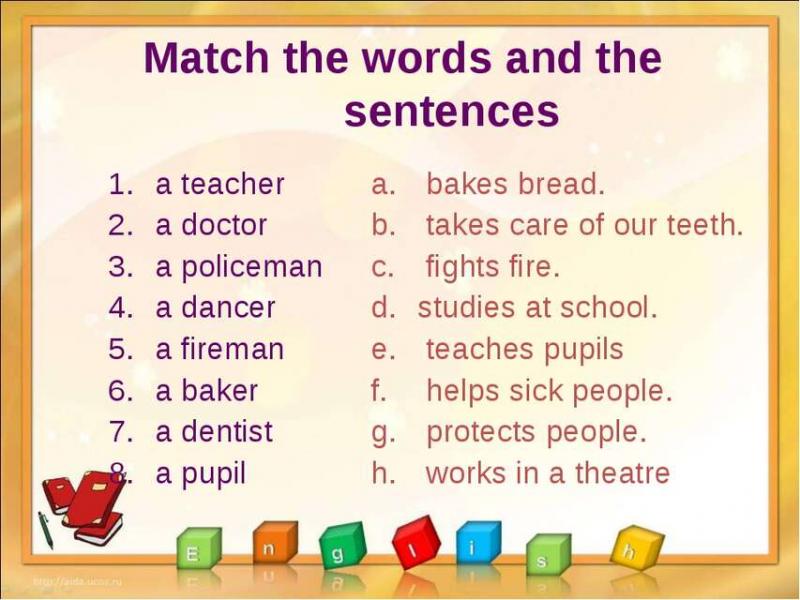
The overhand shot fires top-shelf lasers thanks to maximal windup and powerful downstroke delivery. Master the overhand by stepping toward the target, left foot forward for righties.
Bring the stick high overhead, keeping hands wide apart for control. Transfer weight from back to front foot as you whip the stick down straight towards the goal. Extend arms fully and snap wrists on release for velocity.
Follow through low and point your off-hand toward the target. Overhands generate serious heat but leave you vulnerable to checks. Use them when defenders give time and space to wind up.
Sidearm Shot
Sidearm shots sizzle from a low release point that keeps the ball shielded. Execute textbook sidearms by stepping left, pointing shoulders toward the cage.
Rotate hips and drop stick back, keeping hands spread wide around the ball. Crank hips forward to initiate swing, bringing stick straight across your body at goal level.
Snap wrists and extend lead arm fully at release for accuracy. Follow through with the stick pointing to the top corner you’re targeting. Vary shot speed and locations to keep goalies guessing.
Underhand Shot

Underhand shots unload off a sneaky low release from close range. Get low with knees bent and drop stick head below waist level, cradling across your lap.
Pop up explosively, pushing off your back leg and snapping wrists upwards to launch the ball. Release off the fingers for ideal lift and rotation. Follow through high like tossing a potato chip into your mouth.
Underhanders surprise goalies by starting below their line of vision. Blast them just inside the posts before defenders can react and lay checks.
Quick Stick Shot
Quick stick shots instantly redirect feeds to the back of the net before goalies react. Master quick sticks by:
– Hugging the crease tight to limit shooting angle.
– Receiving passes with lead hand low and guide hand high.
– Letting the ball graze the pocket before shooting, no windup!
– Flicking top hand wrists snappily toward the center of the goal.
– Following through toward the net, don’t just stop at release.
Quick stick success requires hundreds of rapid-fire reps to get timing down instinctually.
Bounce Shot
Bounce shots use a low skipping trajectory that evades goalie sticks. Execute textbook bouncers by:
– Aiming stick head at the turf a few yards in front of the crease.
– Striking down through the ball with stiff wrists on release.
– Imparting backspin by rolling top hand thumb down under shaft.
– Follow through low to the ground so the ball bites turf and skips.
Keep your eye on the ball to see if the bounce angle needs adjusting. Skip one under the crossbar when keepers least expect it!
Drills for Shooting Excellence
They say repetition makes perfect and shooting is no exception. Here are some of the best shooting drills to master:
– Wall ball – Fire shots against a wall working on mechanics and aim.
– Close range – Take shots from in tight, emphasizing fast releases and accuracy.
– 2-line shooting – Shooters alternate from left and right sides, moving after shots.
– Dodge and shoot – Incorporate dodging defenders before shooting on the move.
– Rapid fire – Shoot repeatedly from a spot, focusing on quick ball release.
– Goalie reaction – Read and react to where the keeper positions to hit opposite corners.
Keep taking hundreds of reps until releasing and targeting becomes second nature. Shooters with advanced skills and creativity will dominate games and tally goal after goal.
Dodging and Deception Moves
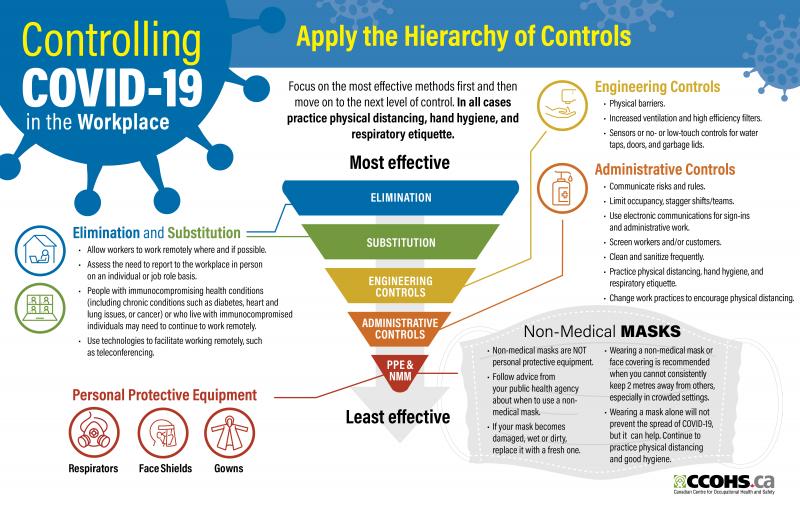
The game of lacrosse is all about stick skills. And when it comes to dodging and deception, having a full arsenal of moves can give your junior player a huge advantage on the field. As a parent, how can you help them unlock their potential and take their game to the next level this season? Here are 15 strategies to get you started.
First and foremost, work on the fundamentals. No amount of fancy footwork matters if your player doesn’t have sound cradling, scooping, passing, and catching abilities. Take some time each practice session to sharpen the basics. Set up a few cones for weaving drills or play catch-and-release to improve handling skills.
Footwork is crucial for effective dodging. Have your junior do ladder drills, jumping over low hurdles, or running oval patterns to build speed and coordination. These agility exercises will help them change direction swiftly to beat defenders.
Of course, stick tricks are fun to learn. All those behind-the-back or between-the-legs moves look cool. But make sure your player only uses them strategically in-game, like when trying to freeze a defender or create space for a pass. Fancy moves should serve a purpose beyond just showboating.
Work on selling the fake. The threat of a dodge is sometimes more effective than the dodge itself. Have your junior practice head fakes, jab steps, and shoulder feints to keep defenders guessing. The more convincing the fake, the more room there’ll be to drive.
To master the split dodge, set up a zigzag pattern of cones. Have your player sprint through, pushing off each outside foot to change direction at each cone. Start slow and focus on body position, then increase speed. This builds muscle memory for sharp lateral cuts.
The swim dodge is a top move for creating space. Have your junior kneel in an athletic stance, stick out front. On your call, have them push off hard and drive forward, bringing their back knee up high to “swim” past. Stress explosiveness from the start.
Work on hesitations and stutter-steps to throw off defenders. Call out a direction and have your player make a quick fake that way before bursting in the opposite direction. Mix up your commands so they don’t anticipate the next move.
Set up a folding chair as a defender and have your junior practice their roll dodge. They should drop their shoulder and drive past the chair, rolling across their body for protection. Start with the chair to their left then switch sides.
To hone the backstep move, have your player start with their back to the goal. On your call, they take one step back with the outside foot to open their body, then drive forward. The sudden change of momentum can catch defenders off guard.
Work on quick stick passes to move the ball after dodging. Set up a target and have your junior dodge an imaginary defender, then make a crisp pass right after the dodge. This adds another dimension versus just shooting after a dodge.
Defenders want ball-watchers. Work on dodge drills without the stick to break that habit. Have your player use sudden head fakes, jukes, and stutter steps to fake out defenders and blow past them to an open spot.
Play 1-on-1 “battles” to practice dodging in game situations. Keep them short and intense. Let your junior try different moves and combinations against a live defender. Offer feedback between battles to sharpen technique.
Watch lacrosse film together, both college and pro. Point out small technical details in the dodges and moves used by the players. Then try to mimic those skills in your next practice session together.
Most importantly, keep practices fun! Incorporate competitions and challenges into your drills. Celebrate successes and embrace failures as learning opportunities. Your enthusiasm and energy sets the tone. Make every session a blast and those skills will stick.
Unlocking your junior’s full potential this lacrosse season is all about having the right tools. Equip them with a diverse mix of dodging and deception skills, then watch their confidence and abilities take off. By consistently mastering the fundamentals and adding new tricks to their repertoire, any player can become a formidable threat on the field. So get creative with your training and have fun developing the complete player!
Developing Field Sense and Game IQ
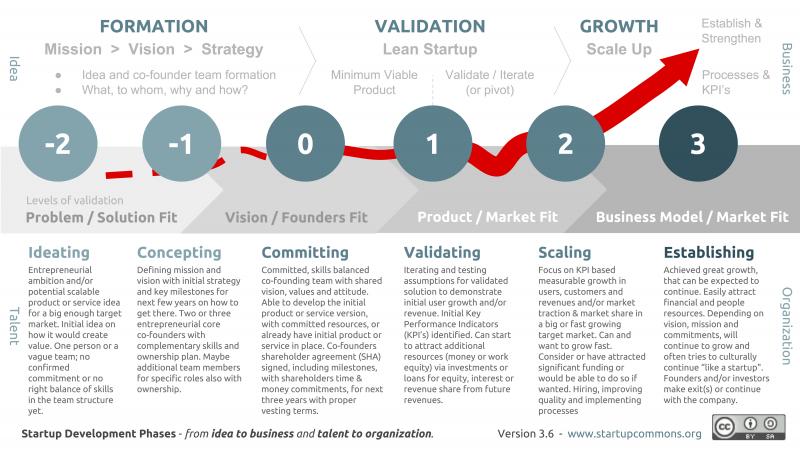
Being a standout lacrosse player requires more than athleticism and stick skills. You also need superior field sense and game IQ. The ability to read plays, anticipate moves, and make smart in-game decisions separates good players from great ones. As a parent, how can you help develop your junior’s lacrosse IQ this season? With the right training strategies, you can unlock their full potential.
Start by watching game film together. Choose a college or pro match and study how the players move without the ball. Point out how cutters create passing lanes and how teams set picks to get shooters open. Recognizing these subtle strategies will sharpen your junior’s field awareness.
During practice, work on scanning drills. Call out a color and have your junior scan the field and say how many items they see of that color, without moving their feet or head. Do this rapidly with different colors to build quick visual recognition.
Run some two-on-one fast break drills. Have your junior play defense while you play offense with a partner. Encourage them to angle defenders and read the field to break up passes and shots. Let them switch to offense too. This improves decision-making in transition.
Stage situational drills like man-up or man-down. Tell your junior a scenario like “down a player with 45 seconds left” then have them walk through smart strategies. Ask questions about what they’d do. Imagining game situations will guide their thinking.
When watching college or pro games together, pause the action and ask “what would you do here?” for key plays. See if their choice aligns with what happened on-screen. Discuss options and decisions to grow their lacrosse IQ.
Have your junior only use their peripheral vision during passing drills. This forces them to see and react to the whole field without focusing on the ball. It builds a wider sense of field space and movement.
Work on communication skills by doing drills silently. With no verbal cues, your junior must direct teammates through motion and positioning. This builds visual field awareness and unspoken chemistry.
Run passing drills where your junior must call out the number of passes to make before shooting. Start with just 2-3 passes then go up to 6-7. This gets them thinking sequences ahead.
To improve anticipation, stand in front of your junior holding a ball. Randomly pretend to make one of 3 moves – a split dodge, roll dodge, or bull dodge. They must call out which move they anticipate. Do 20 reps.
Have your junior watch game film focused on just the goalies. See if they can recognize save tendencies and shooting angles to exploit. Learning goalie cues boosts shooting IQ.
Work on clear and slide drills where your junior covers 2+ roles. Condition them to think ahead about where they need to be next as the ball moves. This builds whole-field awareness.
Run shooting drills where your junior must recognize the pass before catching and shooting in one motion. Work on seeing potential passes earlier to quicken decision-making.
Instead of direct advice during drills, ask probing questions. “Where do you think the next pass goes?” “Who’s open now?” This gets them thinking strategically.
Most importantly, remind your junior that IQ comes from experience. Mistakes will happen. What matters is learning and adapting. Foster an environment of smart risks and keep training fun! With consistent, focused practice integrating field sense and game situations, your junior’s lacrosse IQ will reach new heights.
Strong field vision, anticipation skills, and game intelligence separate the best lacrosse players. By tailoring your training to develop these cognitive abilities, you give your junior an edge this season. Combining film study, situational drills, decision-making exercises, and constant Q&A will unlock their full potential. Sharpening their lacrosse IQ raises their game and confidence to stand out on every play.
Importance of Communication and Teamwork
Lacrosse is often called the fastest game on two feet. With players constantly in motion, staying connected as a team is crucial. Strong communication and teamwork skills separate good lacrosse teams from great ones. As a parent, you can help your junior player become an indispensable team member this season. Let’s look at 15 ways to unlock their potential through communication and collaboration on the field.
Start by encouraging positive talk, especially after mistakes. Create a rule that your junior can’t criticize teammates or themselves during practice. Getting everyone upbeat and focused on the next play builds team energy.
Run drills where players can only communicate through their sticks and bodies. No verbal cues allowed. This sharpens non-verbal connections through motion, positioning, and eye contact.
Film practice sessions and watch the footage together. Point out when teammates made “blind” passes without looking first. Share constructive feedback about scanning the field before passing.
Set up fast break drills with a point player who starts the breakout. Have your junior run it first as the point, then as a middie. Stress the importance of the point communicating the clear plan.
Work on calling out cuts and picks during situational scrimmages. If your junior sees a chance to free up a teammate with a pick, have them yell “Screen left!” This builds chemistry.
Run catching drills where your junior must call for every pass. Every repetition should involve an affirmative “Here!” or “I’m open!” Teach them to demand the ball verbally.
Designate captains during drill stations and scrimmages. Rotate your junior into that leadership role. Captains must communicate plans in the huddle and on the field.
During shooting drills, have a blocker defending the goal. Stress the importance of the shooter communicating the location they are aiming for to teammates setting picks.
Work on clear communication for substitutions. Practice leaving and entering the field smoothly through the substitution box as player changes are called out.
Film practice and point out situations where teammates are visibly frustrated. Discuss constructive ways your junior could have communicated in those moments to defuse tensions.
Run extended passing drills where your junior plays zone defense. They must call out cutters entering/leaving their zone and direct teammates to pick them up.
Set up a fast break drill with uneven sides – say 3 on 2. Encourage your junior to communicate matchups clearly so the defense marks the release man.
Work on yelling out “Ball down!” immediately if your junior’s pass hits the ground. Condition this quick communication as a habit, especially when their teammate isn’t looking.
Practice clears where your junior runs the midfield. Stress the need to turn and communicate the ball location as the clear advances up-field through each zone.
Remind your junior that great teammates don’t just communicate – they listen. Focus on eye contact and focused listening when others speak during huddles and drills.
Most importantly, reinforce that lacrosse is a team sport. Trust, chemistry, and morale ultimately come down to communication. Your junior’s teammates will be their most important “gear” this season, so develop connections through constant talk and collaboration. That spirit will unlock the team’s full potential.
Clear, confident communication on the lacrosse field is crucial, especially for midfield players. By mastering vocal leadership, visual cues, and listening skills, your junior will stand out as an invaluable team member. Use drills and coaching to sharpen their ability to connect teammates this season. Strong comms build chemistry that supercharges every play.
Strength and Conditioning for Lacrosse
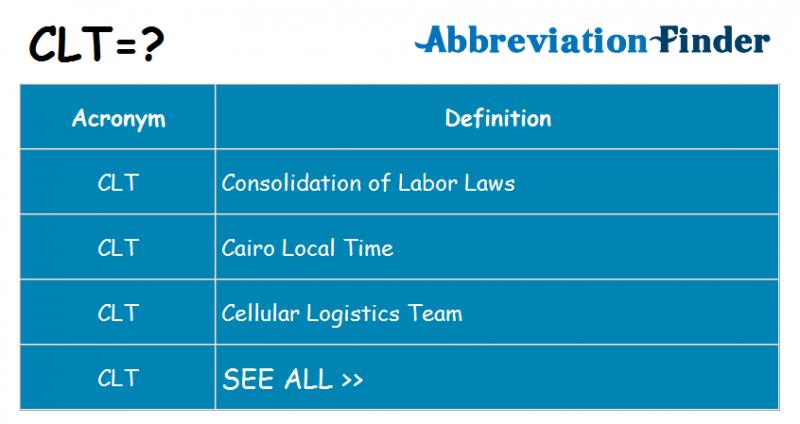
Lacrosse demands a rare combination of speed, coordination, and overall athleticism. To unlock your junior player’s full potential this season, focused strength and conditioning is a must. Here are 15 strategies to take their physical abilities to the next level.
First, assess mobility – restrictions here will limit performance gains. Work on hip, ankle, shoulder and thoracic spine mobility daily. Use foam rolling, banded distractions and targeted stretching to open these key areas.
Build a strong core with planks, Palloff press variations, and medicine ball work. A stable core allows maximal force output from the hips and shoulders for sprinting, shooting and checking.
Focus on single-leg and lateral strength in the lower body. Split squats, lateral lunges, monster walks and lateral bounds will dominate on the field over bilateral lifts.
Correct muscle imbalances between the hips and knees. Many lacrosse injuries stem from quad- or hamstring-dominant players. Target the weaker chain with step-ups, RDLs, and sled work.
Work on deceleration and change of direction abilities. Defensive slides, dodges, and cuts require rapid starts and stops. Prowler pushes, parachute runs, and shuttle drills build this skill.
Use resisted sprints for acceleration work. Hill sprints, sled pulls, and band-resisted runs teach players to claw into the ground with each stride to drive forward explosively.
Focus on unilateral and rotational exercises for core strength to generate power. Think pallof presses, cable chops, suitcase carries, and half-kneeling rotations with bands or cables.
Build grip strength for stick checks and ground ball scoops. Use thick bar holds, plate pinches, wrist curls and stress ball squeezes to improve grip stamina.
Target the posterior chain with deadlifts, good mornings, hip thrusts, and pull-throughs. Posterior strength keeps players driving through fatigue on cuts and clears.
Incorporate odd object work like sandbag carries, sledgehammer swings, and tire flips. These build full-body power for late-game play when fatigue sets in.
Use tempo runs like 200s and 400s to build an engine for repeated midfield shifts. Longer interval training teaches the body to buffer lactate and recover quickly.
Focus on correct movement patterns under fatigue. Use ladder drills,bounding, and lateral slides at the end of workouts when exhausted. It’s game-specific conditioning.
Do single-arm rotational exercises like windmills and cable chops to even out any asymmetries and prevent lower back injuries during twisting.
Build upper back strength with face pulls, band pull-aparts, and various rows for injury resilience. A strong back withstands constant hunched-over running on the field.
Focus on conditioning and mobility work on non-lifting days. Use foam rolling, stretching, sled pushes, battle ropes and other active recovery methods.
With a program tailored to the specific demands of lacrosse, your junior player will dominate this season from start to finish. Consistent strength and conditioning unlocks athletic potential and builds resilience against injury and fatigue.
Lacrosse requires total body power, mobility, speed, and endurance. Give your junior an edge by focusing their training on correcting muscle imbalances, building unilateral strength, improving change of direction skills, and boosting conditioning. A purposeful, periodized program maximizes their athletic potential.
Proper Nutrition for Energy and Recovery
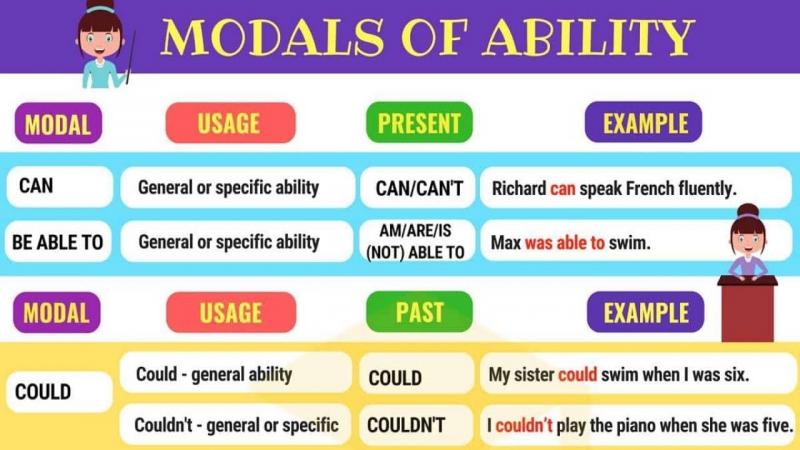
Good nutrition provides the foundation for your junior lacrosse player to perform at their peak. The right diet optimizes energy, aids recovery, and reduces injury risk. This season, proper fueling and hydration will unlock their full potential on the field.
Focus on high-quality proteins to support muscle recovery after training sessions. Grass-fed meats, fatty fish, eggs, and Greek yogurt provide the amino acids their body needs to rebuild.
Choose nutrient-dense carbohydrates like oats, quinoa, sweet potatoes and fruits. These provide sustained energy without blood sugar crashes.
Reduce inflammatory foods like refined sugars, fried foods, and highly processed snacks. Inflammation impairs recovery and increases injury risk.
Stay hydrated before, during and after play. Aim for 10-15 milliliters of water per kilogram of body weight daily, more in hot weather. Dehydration destroys performance.
Fuel up with protein and carbs 2-3 hours before game time for sustained energy – Greek yogurt with berries and oats works perfectly.
Pack nutrient-dense snacks like bananas, jerky, and nuts in their lacrosse bag for quick energy between shifts or at halftime.
Emphasize eating the rainbow – lots of colorful fruits and veggies daily. These provide a diversity of vitamins, minerals and antioxidants.
Reduce their sugar intake, especially from sports drinks. The blood sugar roller coaster cripples energy and focus.
Eat anti-inflammatory foods like wild salmon, avocado, blueberries and turmeric to help reduce muscle soreness.
Within 30 minutes after games or practice, have a protein and carb-based recovery meal – chocolate milk and a banana is ideal.
Wait to rehydrate fully after a game before eating a big meal. Drinking dilutes digestion, so hydrate first.
Have them limit caffeine before games to avoid crashes. It can provide a pre-game boost, but use sparingly.
Discourage empty calorie junk foods with little nutritional value. They lead to poor recovery, fatigue and weight gain.
Cook with anti-inflammatory herbs and spices at home like ginger, turmeric, oregano, garlic, and rosemary.
If your junior is drained, lethargic and sore regularly, ask their doctor to test iron and vitamin D levels. Deficiencies here are common.
Proper nutrition supplements training by optimizing energy, expediting recovery, and reducing inflammation. Fuel your junior lacrosse player for success on and off the field this season!
Eating for performance and recovery is crucial for young athletes. Emphasize whole, nutrient-dense foods over processed junk. Proper hydration and strategic protein/carb intake will unlock your junior’s full potential. Nutrition gives them an edge from the first whistle to the final horn.
Injury Prevention and Care
Injuries can sideline your junior lacrosse player and stall their development. This season, effective prevention and care strategies will keep them healthy and unlock their full potential on the field.
Warm up properly before each practice and game to raise their body temperature and prep the muscles. Focus on dynamic stretches – save static stretching for after activity.
Build strength in the hips, glutes, and core with compound lifts. Weakness here increases lower body injury risk from twisting and cuts.
Stick to load management – limiting weekly and monthly jumps in training volume. Sudden big spikes in intensity commonly lead to overuse injuries.
Work on proper landing mechanics from hops and jumps. They should “stick” each landing with knees bent to absorb force. Poor landings jar joints.
Encourage them to speak up about pains early before they become serious injuries. Addressing a minor issue quickly can prevent a long absence.
Emphasize hydration before, during, and after practice. Dehydration and electrolyte imbalance make muscles prone to cramping and tears.
Use post-practice ice baths or cold tubs to reduce inflammation in muscles and joints. Cryotherapy speeds recovery between sessions.
Focus on single-leg stability work like pistol squats to correct muscle imbalances that contribute to knee/ankle injuries.
Reduce usage of NSAIDs like ibuprofen that may mask pain from an underlying issue. Pain serves a purpose in signaling injury.
Have them warm up and cool down thoroughly after working out to bring their heart rate and body temperature back down gradually.
Make sure their lacrosse equipment fits well and is in good condition. Poorly fitting pads commonly cause skin abrasions and blisters.
Encourage post-practice foam rolling to improve circulation in tight muscles. Restoring blood flow aids recovery and removes waste.
Dial back intensity if your junior has pain that lingers for multiple days. Return to play too soon risks re-injury or aggravation.
Use dynamic warm up drills that mimic game motions to activate muscles. Linear running doesn’t prep the body for the demands of competition.
Work in active recovery days between intense sessions. Easy jogging, swimming, or cycling keeps the muscles moving while healing.
Proper injury care revolves around the R.I.C.E. method – Rest, Ice, Compression, Elevation. Mastering this process helps them bounce back quickly.
With smart programming and responsive care, you can keep your junior lacrosse player healthy and consistently improving. Use prevention and early intervention to avoid lost seasons due to injury.
Injuries derail development in young athletes. Emphasize strength training, hydration, cryotherapy, and rest to keep your junior on the field. Handle pains early before they become serious issues. Staying healthy unlocks their potential.
Positional Play and Matchups
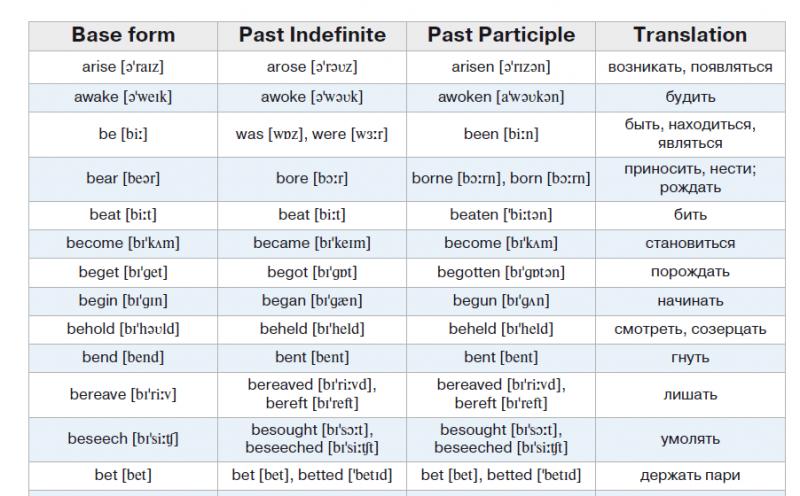
Having versatile lacrosse skills is crucial. But excelling in your specific position and winning matchups gives teams an edge. For young players, focusing on positional play unlocks their full potential.
For midfielders, work on developing a dominant strong hand. Perfect a go-to split dodge and shot to attack from the wing with confidence.
As an attackman, hone quick stick passes and shots after cuts. Work on finishing through contact at weird angles around the crease.
For defenders, drill footwork for defending dodges and picking up ground balls. Focus on body position, foot quickness and approach angles.
If playing goalie, sharpen reactions with close-range shot drills. Work on tracking the ball off sticks and making kick saves at odd angles.
As a faceoff specialist, perfect the clamp and pinching pop to secure possession. Drill hand speed and explosiveness to gain early leverage.
For offensive middies, develop chemistry with the starting attackmen. Work on spacing, cuts, picks and no-look passing.
As a short stick defensive middie, focus on defending the wings, clearing cleanly under pressure, and recovering after slides.
If playing LSM, work on footwork and positioning to neutralize and dictate matchups. Take away their strongest dodger.
For long pole middies, drill picking off passes in transition. Work on clearing through pressure and pushing transition.
As a FOGO, obsess over faceoff technique, GBs, and offensive/defensive awareness after the draw.
For defenders, develop physicality with slash checks, holds and body positioning. Winning matchups starts with toughness.
As an off-ball attackman, sharpen cuts off picks and catching quick feeds to finish inside.
If playing SSDM, focus on defending crease attacks and quarterbacking the defense’s slides and picks.
For goalies, drill quick outlet passing after saves to spark fast breaks. Work the clearing game.
As a FOGO, quicken hands and feet to rake/plunge faceoffs cleanly. Speed and timing win possessions.
Tailoring your junior’s training to their exact position and matchups accelerates their learning. Possessing positional mastery unlocks their full potential within your team’s scheme.
No two lacrosse positions are the same. Drilling your junior on their specific role – whether scoring, defending, facing off, etc. – gives them an edge. Mastering matchups helps win games.
Managing Emotions and Mental Toughness

Lacrosse is an emotional game full of highs and lows. Learning to manage feelings and develop mental toughness unlocks any player’s full potential. Here are 15 strategies to help your junior handle the mental side of lacrosse.
Teach deep breathing techniques to manage emotions. Have them inhale for 5 seconds, hold for 2, exhale for 5. This stimulates the parasympathetic nervous system.
Use positive self-talk cues like “next play” or “bounce back” after mistakes. Short mental resets prevent compounding errors.
Discuss constructive ways to handle frustration like elevated breathing or self-talk. Things like throwing sticks must be avoided.
Focus on internal locus of control. Effort, attitude and focus are within their control, not referees or opponents.
Be a sounding board to discuss their feelings about the game. Provide perspective on how to reframe thoughts constructively.
Discuss how body language impacts emotions and teammates. Keeping poised with confident body language facilitates mental toughness.
Teach them to avoid negative teammates or coaches. Surrounding themselves with supportive, positive people is crucial.
Use visualization techniques where they imagine succeeding in game scenarios. Visualization helps engrain the feelings and actions needed.
Focus on consistency in performance, not outcomes. Narrowing focus to executing on controllables creates resilience.
Emphasize values like effort, teamwork, and sportsmanship. Winning vs. losing is fleeting, but values endure.
Celebrate incremental progress through effort. Outcomes are often outside one’s control. Effort should be the gauge.
Discuss constructive ways to provide and receive feedback with teammates. Open, growth-minded communication creates trust.
Remind them lacrosse is a game, and games should be fun. Over-seriousness breeds pressure and inhibits enjoyment.
Teach them to mentally flush mistakes quickly. Dwelling on errors compounds them. Focus efforts on the next play.
Most importantly, model resilience and positivity in your own behavior. Your example is the most powerful teaching tool.
The mental and emotional side of lacrosse is often overlooked but vital. Equipping your junior with mental skills and resilience unlocks their potential in any situation.
Lacrosse is an emotional rollercoaster. By teaching techniques to constructively manage feelings and stress, your junior player will excel. Building mental toughness and focus gives them an edge at any level.
Watching Film to Improve Decision Making
In a fast-paced game like lacrosse, decision-making skills are crucial. Studying game film unlocks those abilities for young players by sharpening field vision, reads, and IQ. Here are 15 strategies to help your junior learn from film.
Focus on their on-ball decision-making first. Could they have dodged, passed or shot earlier before getting checked?
Look for skip passes they could have made to open players but missed. Film reveals the whole field’s opportunities.
Note defensive positioning weaknesses like over-sliding. Film shows team tendencies to exploit.
Watch transitions and see if early outlet passes were available after turnovers. Long clears start with vision.
Study goalies for save tendencies on shots. Film reveals openings to aiming locations.
See if picks and screens are being made or missed on off-ball cuts. Film doesn’t lie about movement.
Note opponent set plays off faceoffs or from out of bounds. Anticipating these on film helps stop them.
Look for non-verbal communication between teammates that your junior missed in real time.
Watch ride/clear situations and challenge their decision making. Were outlet options open earlier?
See if defenders sag off dodgers at times, opening up straight-line drives to goal.
Note when sliding earlier could have prevented inside passes that led to goals.
Have them diagram plays where a pick could have gotten a teammate open for a shot.
Look for over-passing in settled offenses instead of taking open shots. Shooting volume matters.
Diagram man-up plays that could take advantage of overplaying passing lanes and back-side openings.
Let your junior spot their own decision errors first before you point them out. Accountability begins with self-review.
Studying film reveals opportunities the game moves too fast to see. Reviewing video unlocks your lacrosse player’s full decision-making potential.
Seeing the whole field through film provides invaluable learning. Have your junior chart plays, analyze decisions, and spot tendencies. Unlocking field vision accelerates their IQ.
Setting Goals and Motivation to Improve
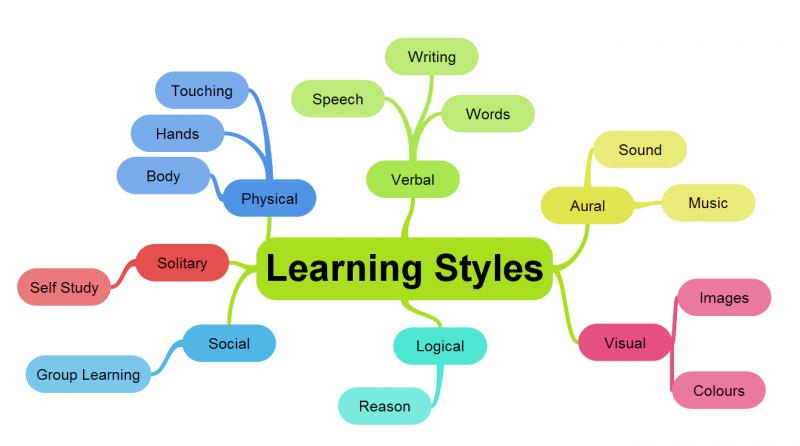
Reaching peak performance requires the right motivation. Setting clear goals tailored to your junior lacrosse player’s development will unlock their full potential. Here are 15 strategies to motivate skill growth.
Set micro goals for each practice like perfect passing or hitting a shot percentage. Small wins drive motivation.
Tailor goals to their position or role. A defender’s goals will differ from a scorer’s.
Include process goals like consistently executing proper technique that supports long-term growth.
Let your junior set their own goals. Player-owned goals boost intrinsic motivation to achieve them.
Make goals specific and measurable so progress is definitive. Quantify with stats or achievements.
Encourage both outcome and process goals that balance skill growth and performance.
Use short-term goals as stepping stones to longer-term objectives. Meet small goals to build confidence towards big goals.
Track goals visually with goal sheets or progress charts. Visuals reinforce the objectives and progress.
Help them set time-bound goals with specific target dates. Deadlines drive urgency to act.
Review and adjust goals regularly. Goals should evolve with skill level to remain challenging.
Celebrate small goal progress, not just end achievements. Recognizing baby steps motivates the journey.
Make sure goals require effort but aren’t unrealistic. Overly difficult goals defeat motivation.
Use goal hardship to teach perseverance and resilience. Struggles often precede success.
Emphasize intrinsic motivation through love of the game. External rewards or pressure divorces passion from effort.
Ask them “why” questions about their goals to reinforce purpose and motivation. Why ignites the fire within.
Well-structured goals tailored to your player’s needs optimize motivation and accelerate skill growth. Goals unleash their potential.
Goal-setting provides the blueprint to perform at their peak. Collaboratively set measurable process and outcome goals to unlock your junior’s motivation and development.
Having Fun While Competing and Learning
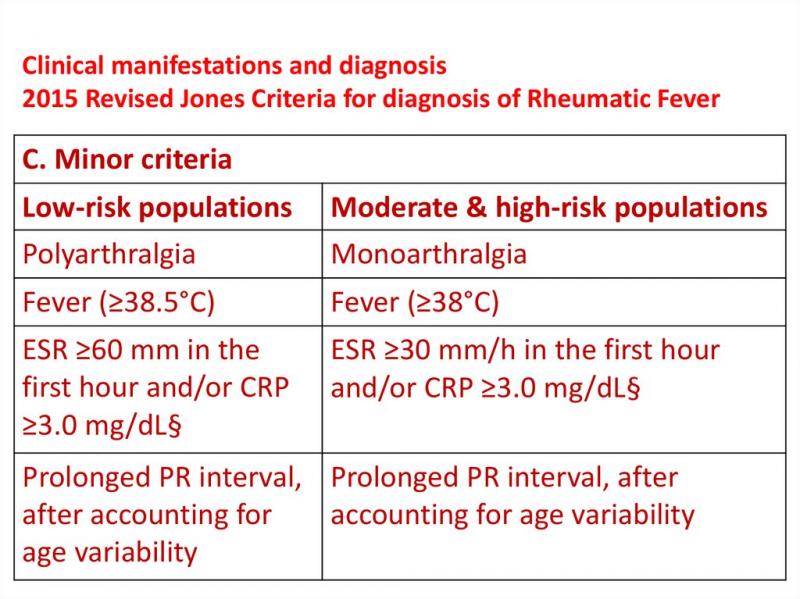
As lacrosse becomes more competitive at younger ages, don’t forget the importance of fun. Keeping practices and games enjoyable unlocks your junior player’s full potential.
Incorporate games into drills like “knockout” for shooting. Friendly competition fuels engagement and effort.
Allow time for players to freestyle and experiment with their stick skills at practice. Unstructured play taps creativity.
End each practice with scrimmages. They’re fun and let players test skills in game-like conditions.
Create experiences through themed practices like Halloween or superheroes. Tap their imaginations to battle boredom.
Use challenge competitions in drills, like lowest shot count wins. Adding a race against teammates brings energy.
Focus praise on effort and attitude more than results. This fosters enjoyment of improvement and team bonding.
Ask which drills your junior likes most and least. Tailor practices to maximize fun elements.
Remind them that effort and learning, not points or wins, define success. This reduces outcome pressure.
Teach them lacrosse terms and rules. Knowledge boosts enjoyment and in-game communication.
Emphasize teamwork in drills. Moving together as a unit is more rewarding than solo success.
Learn each player’s motivational style – social, achievement, immersion. Cater practices and coaching to them.
Recognize players for character choices like sportsmanship, not just athletic feats. This fulfills young athletes.
Ask probing questions instead of barking directives. Making players think boosts engagement with concepts.
Remind your junior that effort and attitude are within their control. These dictate enjoyment and improvement.
Keep your coaching calm, upbeat and focused on growth. Your energy sets the tone for players to thrive.
Making lacrosse engaging on top of competitive accelerates development. Practices and games should energize, not drain, players.
Fun must come first at youth ages. Structure practices and coaching to maximize enjoyment, team bonding and developmental gains through games and challenges.

